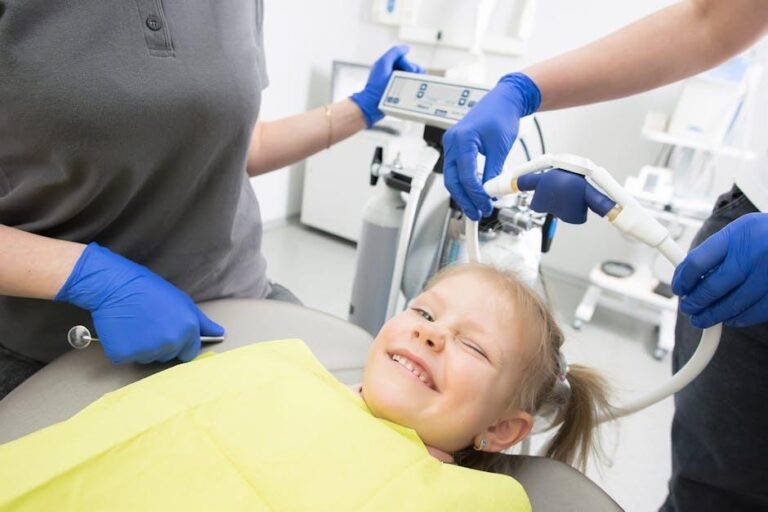1 in 3 Kids Has Dental Problems, Poll Finds – U.S. News & World Report
Recent findings from a nationwide poll are raising significant concerns about the state of children’s oral health in the United States. According to the report published by U.S. News & World Report, an alarming 1 in 3 kids suffers from dental problems ranging from cavities to gum disease. This article dives deep into the implications of this finding, the primary causes behind these dental issues, and actionable strategies parents can use to protect their children’s smiles.
Understanding the Scope of Children’s Dental Problems
Oral health is a critical aspect of overall health, especially during childhood when teeth and gums develop. The poll indicates that about 33% of American children currently face dental problems, a statistic that underscores the growing need for increased awareness, prevention, and treatment.
Common dental problems identified among kids include:
- Dental cavities (tooth decay)
- Gum inflammation (gingivitis)
- Early tooth loss
- Tooth sensitivity and pain
Key Causes Behind Pediatric Dental Problems
The poll highlights several contributing factors to why so many children experience dental issues, including:
- Poor oral hygiene habits: Irregular brushing and flossing.
- High sugar diets: Increased consumption of sugary snacks and beverages.
- Limited access to dental care: Economic and geographic barriers.
- Lack of parental awareness: Underestimating the importance of early dental visits.
- Use of bottles or sippy cups with sugary liquids: Particularly at bedtime.
Statistical Snapshot: Causes of Pediatric Dental Problems
| Cause | Percentage of Affected Kids | Impact |
|---|---|---|
| Poor Oral Hygiene | 45% | Major driver of tooth decay |
| High Sugar Intake | 40% | Increases cavity risk |
| Limited Dental Access | 25% | Delays treatment |
| Parental Awareness | 30% | Influences preventive care |
The Importance of Early Dental Care for Children
Early dental care is essential for preventing long-term oral health complications. Experts recommend that children see a dentist by their first birthday or within six months after their first tooth erupts. Regular dental check-ups not only prevent problems but also build comfort and familiarity with dental procedures, reducing anxiety.
Benefits of Routine Pediatric Dental Visits
- Early detection and management of dental issues
- Professional teeth cleaning and fluoride treatments
- Education about proper brushing and flossing techniques
- Advice on nutrition and healthy habits
Practical Tips to Prevent Dental Problems in Kids
Parents and caregivers can take numerous steps to promote good oral health habits for their children:
- Encourage twice-daily brushing: Use fluoride toothpaste suitable for kids.
- Floss daily: Start flossing once two teeth touch.
- Limit sugary foods and drinks: Opt for water, milk, and healthy snacks instead.
- Schedule regular dental check-ups: At least twice a year or as advised by your dentist.
- Model good dental habits: Kids emulate parental behaviors.
- Use dental sealants: Ask your dentist about protective sealants for molars.
- Promote a balanced diet: Rich in calcium, vitamin D, and phosphorus for strong teeth.
Case Study: The Impact of Prevention in a Community Setting
In a recent community dental health initiative in a midwestern U.S. city, a targeted prevention program aimed at school-aged kids showed impressive results. After implementing educational workshops for parents and children, increasing fluoride varnish applications in schools, and promoting healthy snacking, the incidence of cavities dropped by nearly 20% in two years.
This case demonstrates how coordinated efforts can reduce the prevalence of dental problems among children significantly when supported by schools, families, and healthcare providers.
First-Hand Experience: A Parent’s Perspective
Sarah, a mother of two from Ohio, shares her story: “My son had multiple cavities by age five, despite our efforts. After learning more at a school dental seminar, we changed his diet and brushing routine and got him to a pediatric dentist regularly. His oral health vastly improved, and we are now more confident in managing his dental care.”
Stories like Sarah’s reinforce the critical role education and preventive care play in combating the high rate of dental problems found in children today.
Conclusion: Prioritizing Children’s Oral Health Today
The revealing statistic that 1 in 3 kids in the U.S. faces dental problems is a wake-up call for parents, educators, and health professionals alike. By understanding the root causes and taking proactive steps, we can significantly improve children’s dental health outcomes. Early dental visits, proper hygiene, balanced nutrition, and education form the cornerstone of prevention. Ensuring our children grow up with healthy, strong teeth is fundamental not only for their smiles but for their overall well-being and confidence.
Stay informed, stay proactive, and let’s work together to reduce pediatric dental problems nationwide.


